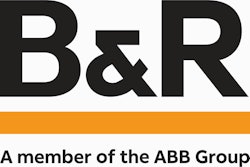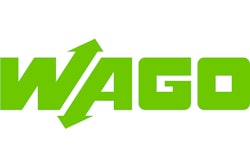This group of end user engineers and technology providers has been working to expand the state model and tag database developed by the OMAC Packaging Working Group into actual control and machine design. The Cincinnati meeting showed how several different suppliers had written modular code for their controllers to accomplish the same control of a model form-fill-seal machine.
The impact of this technololgy has great potential for cost reductions and better equipment for both packaging machinery builders and their customers. The companies involved were B&R Automation, Baumuller, Beckhoff, Rockwell Automation, Wago and Wonderware. Other companies were scheduled to attend, but bad weather hit Cincinnati the night before and reduced attendance. Many end users were in attendance, as well.
A model form-fill-seal demo was constructed and a B&R Automation controller, then a Rockwell Automation controller--all supervised by a Wonderware human machine interface--were used to control the demo. The programs were written in modular style based on PackML and Make2Pack guidelines. The controllers were connected to the demo equipment alternately with no change in perceivable performance. Because of the standardized use of tags and programming model, the Wonderware setup was minimized to cover an additional controller after configuring the first.
Baumuller, Beckhoff, and Wago demonstrated their controllers also programmed using the Make2Pack guideline.
According to Procter & Gamble engineer and organizer of the event David Chappell, packaging machinery OEMs will benefit—some already have—through the development of libraries of software modules with standardized nomenclature and methods. After developing these the first time, programming and debug time of subsequent machines can be cut up to 80%. For end users that specify these standards in their procurement, this means faster delivery of machines, faster commissioning, and easier integration and maintenance. For those in regulated industries, following these procedures should even cut time required for process validation. End users on the committee hope that they will see a price decrease eventually as OEMs adopt Make2Pack.
The organization that began discussing machine control interoperability and standards about 10 years ago—OMAC Users Group—developed a packaging machine working group. This group developed a state model of packaging machines (PackML) and tag definitions (PackTags) that were common to all packaging machines. The model for this work came from the ISA 88 (batch control) standard. The problem remained about how to bring the state model into reality in actual machinery. A group was formed jointly by OMAC and WBF (the organization formerly known as World Batch Forum) to accomplish this—and thus Make2Pack was born, although now it is the Part 5 committee of ISA SP-88. These groups are all part of the Automation Federation, an umbrella group seeking to coordinate the efforts of manufacturing standards development.
More information is available at the following sites:
www.automationfederation.org
www.make2pack.org
www.omac.org
www.wbf.org
































